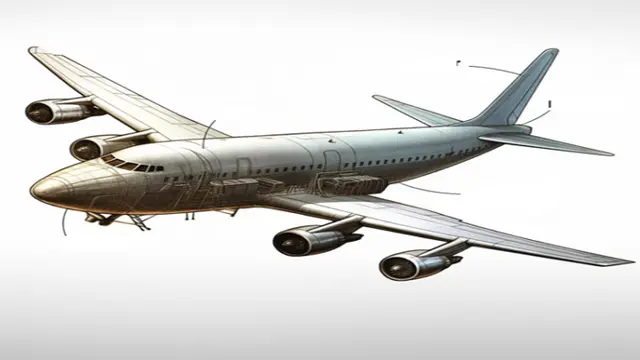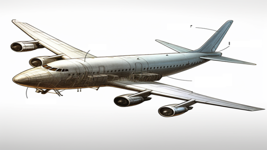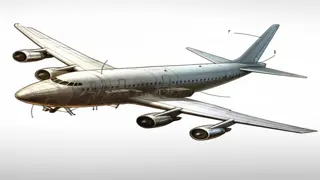
Online Fundamentals Of Aircraft Design Diploma
Fundamentals Of Aircraft Design Diploma with free certificate and transcript
Elearn College
Summary
- Diploma Certificate and Transcript - Free
- Exam(s) / assessment(s) is included in price
Add to basket or enquire
Overview
Soaring through the skies, aircraft are marvels of human ingenuity and engineering. But, have you ever wondered about the intricate details that go into crafting these flying wonders? Introducing the Fundamentals Of Aircraft Design Diploma, an online course tailored for those keen to understand the core concepts and techniques behind aircraft design.
This course offers a comprehensive exploration into the world of aircraft design and system engineering. Beginning with a detailed look at the bedrock of aircraft formation, the Introduction to Aircraft Design and System Engineering module provides learners with a broad understanding of the overarching principles. It lays the groundwork for what’s to come, ensuring each student has a robust foundation.
Course media
Description
The course touches upon Conceptual Design. Here, learners gain insights into the initial stages of aircraft development, where the seed of an idea takes shape. This is the phase where aeronautical engineers brainstorm and sketch out primary concepts, set performance goals, and visualise the aircraft’s potential future.
In the Preliminary Design module, students learn how these initial concepts undergo refinement. Emphasis is placed on the feasibility of the design, understanding its aerodynamics, structural integrity, and functionality. It’s a crucial phase, bridging the gap between mere concepts and real, functional designs.
But what about the parts that make up an aircraft? The Fundamentals Of Aircraft Design Diploma doesn’t skip a beat. Modules such as Wing Design, Tail Design, and Fuselage Design delve deep into the specifics. From understanding the importance of a wing’s aerodynamic shape to the design intricacies of the fuselage, learners get an in-depth look at how each component is crafted for optimum performance.
And it doesn’t stop there. Aircraft are not just about the body. The Propulsion Systems Design module introduces students to the heart of the aircraft: its engine. Learn the mechanics behind propulsion, how different systems are designed, and the role they play in making an aircraft soar.
Next up, the Landing Gear module. Often overlooked but vitally important, this segment teaches the principles behind designing landing systems that are robust, safe, and efficient. Whether it’s a massive jumbo jet or a small private plane, understanding the landing gear’s design is crucial for safe takeoffs and touch downs.
But how does an aircraft steer its way through the skies? The Design of Control Surfaces module provides clarity. From ailerons to rudders, this segment explains how aircraft manoeuvre, change direction, and maintain stability in the air.
Lastly, the Weight of Components and Weight Distribution module equips learners with knowledge about the importance of weight management in aircraft. Understanding the balance, weight distribution, and the effect of each component’s weight is essential for safe and efficient flight.
Enrolling in the Fundamentals Of Aircraft Design Diploma ensures that by the end of the journey, learners not only appreciate the marvel that is aircraft but also possess a solid understanding of the design principles behind them. This online course provides flexibility, allowing students to learn at their pace, from the comfort of their homes. If you have a passion for aviation and a desire to know what goes on behind those flying machines, this diploma is your ticket to knowledge.
Join today and embark on a fascinating journey through the world of aircraft design.
What you will learn
1:Introduction to Aircraft Design and System Engineering
2:Conceptual Design
3:Preliminary Design
4:Wing Design
5:Tail Design
6:Fuselage Design
7:Propulsion Systems Design
8:Landing Gear
9:Design of Control Surfaces
10:Weight of Components and Weight Distribution
Who is this course for?
Anyone having an interest in Fundamentals Of Aircraft Design
Requirements
There are no entry requirements. No background training or qualifications are required. Anyone can enrol at any time, beginners, intermediates and experienced all year round.
Career path
On successful completion, learners will have a comprehensive understanding of the principles and practices of Fundamentals Of Aircraft Design and will have developed some essential skills required to take their first steps into this industry. Career opportunities in this field include:
Aircraft Design Engineer
Aerospace Systems Analyst
Structural Design Engineer
Aircraft Systems Engineer
Questions and answers
Currently there are no Q&As for this course. Be the first to ask a question.
Certificates
Diploma Certificate and Transcript
Digital certificate - Included
Reviews
Currently there are no reviews for this course. Be the first to leave a review.
Legal information
This course is advertised on reed.co.uk by the Course Provider, whose terms and conditions apply. Purchases are made directly from the Course Provider, and as such, content and materials are supplied by the Course Provider directly. Reed is acting as agent and not reseller in relation to this course. Reed's only responsibility is to facilitate your payment for the course. It is your responsibility to review and agree to the Course Provider's terms and conditions and satisfy yourself as to the suitability of the course you intend to purchase. Reed will not have any responsibility for the content of the course and/or associated materials.



